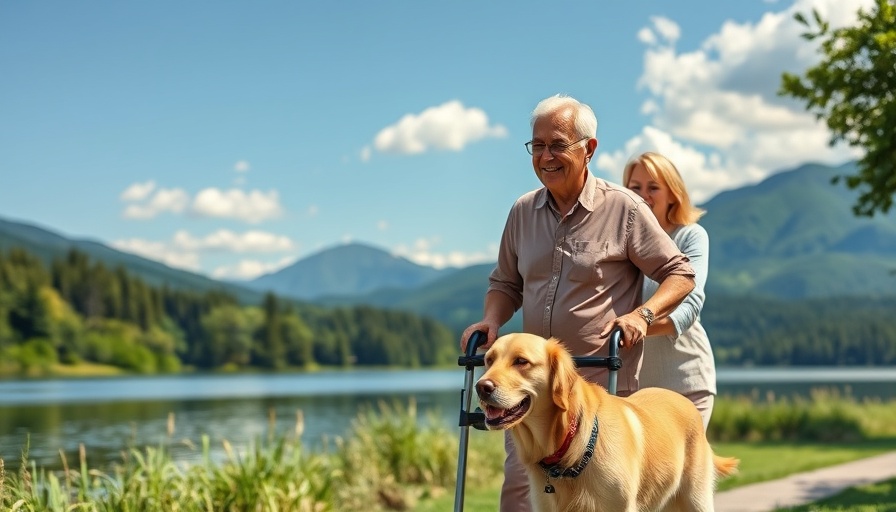
Rediscovering Freedom: The Role of Rollator Walkers
As spring unfolds, seniors are given the chance to embrace the great outdoors once again. In this vibrant season, mobility becomes an essential aspect of life that shouldn’t be overshadowed by age or physical limitations. Rollator walkers emerge as not just mobility aids but as gateways to independence, allowing seniors to enjoy walks in the park, visit friends, or manage errands without the fear of falling. Comfort, confidence, and companionship are just a rollator away.
More Than Just a Walker: Unpacking the Benefits of Rollator Walkers
Rollator walkers bring a refreshing alternative to traditional walkers, designed for more than just basic support. They feature wheels, hand brakes, and an integrated seat which fosters greater movement freedom and accessibility. Thanks to these features, seniors can take longer walks and rest when needed, alleviating the stress of potential exhaustion. The encouragement of outdoor activity nurtures not only physical well-being but also mental health through increased social interaction and connection with the community.
Choosing the Right Rollator: What to Consider
Every individual has unique needs when it comes to mobility aids. It’s crucial to select a rollator that supports your lifestyle. Here are key attributes to consider:
- Adjustability: A rollator should suit your height. Look for adjustable handles to ensure optimal posture.
- Portability: For those who frequently travel, lightweight and foldable designs make transport simple.
- Wheels and Brakes: Choose sturdy wheels able to traverse diverse terrains, coupled with reliable brakes for safety.
- Storage and Seating: Select models with ample storage for personal items and a comfortable seat for resting.
Health Benefits of Using a Rollator Walker
The use of rollator walkers facilitates not only mobility but also health improvements. Regular walking promotes heart health, increases physical activity levels, and boosts mental clarity. Engaging in regular exercise, paired with reliable support, aids in maintaining muscle strength and fostering an active lifestyle. Moreover, rollators encourage independence, which is crucial for emotional well-being.
Real-Life Experiences: Seniors Sharing Their Stories
Many seniors have shared transformational experiences since using rollators. For instance, Mrs. Thompson, a 74-year-old retiree, expresses how her rollator walker has helped her rediscover her zest for life. "I can now stroll through the neighborhood without worrying about losing my balance. It’s not just a walker; it’s my freedom," she shares. These anecdotes reflect the profound impact that these mobility aids can have.
Future Trends: Innovations in Mobility Aids
The future of rollator design is exciting, with potential trends leaning towards smart technology. Such innovations may include built-in fitness trackers or health monitoring systems that keep seniors connected to caregivers and family members. These advancements could revolutionize how mobility aids assist in achieving overall wellness goals, integrating both health technology and mobility in a way that fosters active living.
Conclusion: Embracing an Active Lifestyle
As you explore the possibilities presented by rollator walkers, remember they are tools designed not just for mobility but for reclaiming a fulfilling life. By encouraging independence and facilitating access to the outdoors, rollators enhance social engagements and contribute positively to mental health. The onset of spring is the perfect time to move outside and embrace the freedom that active living brings; take that first step and discover the difference a rollator can make in your life!
 Add Row
Add Row  Add
Add 




Write A Comment